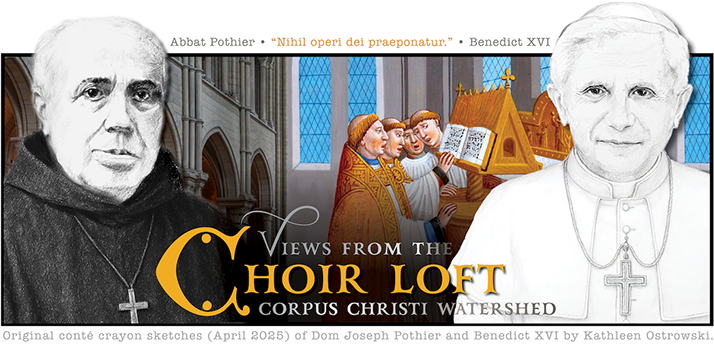
 OMETIMES IT CAN FEEL like we’re “all alone” in our battle to promote authentic sacred music, which Fr. John Selner rightly tells us we need in our Catholic churches. When discouraged, it often helps to remember what others have gone through to promote a cause worth fighting for.
OMETIMES IT CAN FEEL like we’re “all alone” in our battle to promote authentic sacred music, which Fr. John Selner rightly tells us we need in our Catholic churches. When discouraged, it often helps to remember what others have gone through to promote a cause worth fighting for.
Some of us have suffered greatly, but I doubt our trials come anywhere near what was undergone by black children in the 1950s and 1960s. Did you know that in many places, small numbers of children—sometimes only one black child—were sent into schools that were totally white, to promote racial integration? 1 The riots in Little Rock, Arkansas, escalated after nine (9) black students were chosen to attend a white school. The violence forced President Eisenhower to send in federal troops from the 101st Airborne Division of the United States Army. Each black student had a soldier waiting outside the classroom door to make sure nothing bad happened during the school day. The soldiers would escort the “Little Rock Nine” with rifles drawn each morning. This definitely helped the situation, but black children still underwent great sufferings (because the soldiers only stayed for a limited time). But Faubus couldn’t fight the federal troops sent by Eisenhower, so he closed down the schools. Did he really feel that his plan would succeed? How could closing down the schools be a good plan? Governor George Wallace declared in 1963: “Segregation now, segregation tomorrow, segregation forever!” Such words & actions of seem ridiculous and unsustainable, looking back.
Our struggles for sacred music have nothing to do with civil rights. However, perhaps someday we will look back upon our situation and notice progress has been made. Perhaps someday we will look back at our times—when 95% of music directors in Catholic churches “roll the dice” each week to select the hymns instead of using the texts assigned by the Church—and find it strange.
YouTube has a bunch of videos about the Little Rock Nine. Here’s one:
When I consider what the Little Rock Nine underwent, I realize how truly blessed I have been in my life.

NOTES FROM THIS ARTICLE:
1 By the way, not all schools were segregated. For example, in Topeka, KS—where Brown Vs. Board of Education happened—the high schools & middle schools were not segregated. My understanding is that only elementary schools were segregated.

